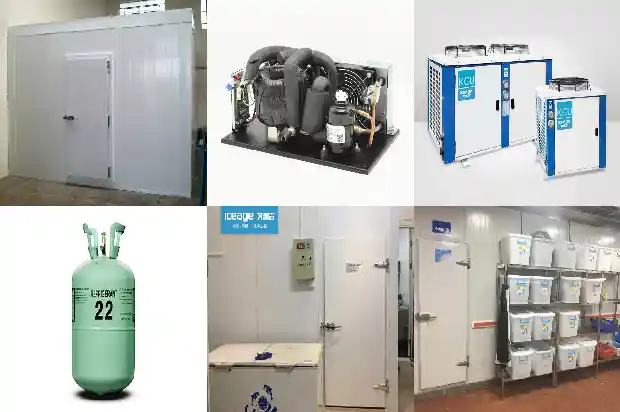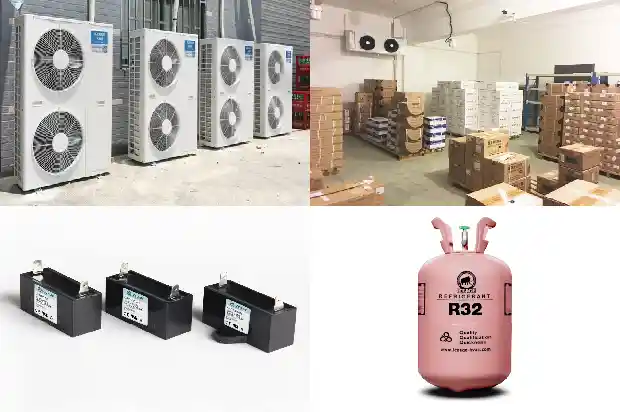Daily Maintenance Training for Users after Installation of Small and Medium-Sized Cold Storages
2024-09-28
Due to the high requirements of the stored materials for the working environment of the cold storage, in addition to having good sealing performance, it is also necessary to prevent the deterioration of the stored materials caused by unstable and harsh environments in the cold storage. Therefore, when using the cold storage daily, careful maintenance and management are required. This requires that after the installation of the cold storage is completed, the cold storage installer should provide training to the specific users. In addition to introducing the structure and basic principles of the cold storage equipment, in order to ensure the correct use of the cold storage, training on daily maintenance content should also be provided to the users. The daily maintenance content of the cold storage generally includes the following aspects:
Daily inspection items:
Daily inspection items:
- Frequently check whether the voltage of the power supply meets the requirements and whether the protection function of the power supply is normal and effective.
- The electrical equipment in the cold storage facilities should be kept away from moisture to avoid electric shock accidents caused by leakage.
- The maintenance of electrical equipment in cold storage facilities should be operated by refrigeration workers or electricians who know refrigeration knowledge. Any maintenance must cut off the power supply to ensure safety.
- Check whether the hinges, handles, and door locks of the cold storage door are normal and lubricate them regularly according to the actual situation.
- Check the frosting situation of the evaporator. If the frost layer on the evaporator in the warehouse thickens and the warehouse temperature does not drop, it may be due to excessive air humidity, long defrosting intervals, abnormal warehouse temperature settings, etc. At this time, manual defrosting (defrosting) treatment should be carried out. After the frost layer disappears, start the equipment after a short wait and observe the operation of the equipment.
- If abnormal noise is found during the operation of the equipment, stop the machine for inspection and run it again after troubleshooting.
- The parameters such as the warehouse temperature and temperature difference of the cold storage equipment are set according to the actual situation of the cold storage during installation. Therefore, users generally do not need to change the set parameters arbitrarily during normal operation.
- The passages around the cold storage should be unobstructed, without flammable and explosive items, and ensure that there are no safety hazards. Ensure good heat dissipation. The top panel of the cold storage should not be piled with sundries to prevent the compression deformation of the warehouse panel and affect the thermal insulation performance.
- During the use of the cold storage, avoid the collision and scratching of hard objects on the warehouse panel and the warehouse body. Prevent the depression and corrosion of the warehouse panel. In severe cases, the local thermal insulation performance of the warehouse body will be reduced.
- The assembled cold storage is spliced by insulation boards. In order to prevent air and moisture from entering the warehouse, during installation and construction, sealant will be used to seal the gaps between the boards. Therefore, during use, the sealing condition should be checked frequently, and some parts with failed sealing should be repaired in time.
- If the ground of a small and medium-sized assembled cold storage uses insulation boards, when in use, it should be prevented that there is a large amount of ice and water on the ground and clean and wipe it in time. Do not knock with hard objects to prevent damage to the ground.
- Check whether there is condensate on the periphery of the cold storage and the outer wall of the warehouse panel, and check whether the cold storage door is opened flexibly and the sealing effect of the cold storage door.
- The temperature in the warehouse should be recorded and monitored regularly. When large temperature fluctuations or abnormalities are found, feedback to the equipment management personnel for handling in time.

Precautions for storing goods and entering and leaving the warehouse: - When entering and leaving the cold storage, the cold storage door needs to be closed in time to reduce the loss of cold air and affect abnormal warehouse temperature or the occurrence of cold leakage, condensation, frosting, and icing.
- Make a good plan for entering and leaving the warehouse, and try to reduce the switching times of the cold storage door as much as possible to prevent the invasion of hot air and reduce the frosting amount of the air cooler.
- The items loaded into the warehouse should not contain too much moisture to prevent excessive humidity in the warehouse and affect the service life of the cold storage equipment.
- When stacking goods in the warehouse, pay attention to leaving a cold air passage. There should be a certain gap around the air cooler. Items of the same height as the air cooler should not be stacked in front of the air cooler to avoid affecting the cooling effect. Do not block the sewer pipeline when storing goods. When storing goods, handle them with care to prevent damage to the pipeline.
- Food entering the cold storage must be inspected and can be stored in the warehouse only if it has not deteriorated. Prevent the generation of peculiar smell.

Daily cleaning of small and medium-sized cold storages: - The cold storage should be removed and cleaned regularly. For example, clean the hygiene once a day and clean it once every half month to keep the warehouse clean and odorless. The sewer pipes of the cold storage should be cleaned of dirt in time to prevent blockage.
- Thoroughly clean the cold storage once a month. In addition to basic wiping, rinse the frosted and frozen parts with water to prevent clogging of the drainage parts and outlet fins and reduce the cooling efficiency.
- Pay attention to safety during cleaning. Do not splash water on the fan motor. If cleaning is carried out when the equipment is running, keep a certain distance from moving parts such as fans and motors to prevent being scratched.
- For cold storages that store refrigerated cooking raw materials and foods, in order to ensure the refrigeration quality of foods and cooking raw materials and prevent the massive reproduction and growth of molds and bacteria, regular mildew removal, sterilization and disinfection work should be carried out in the cold storage.
- If it is found that the temperature in the cold storage warehouse cannot drop, immediately find the reason and troubleshoot.
In addition, if the cold storage is installed and not used temporarily or is out of service for a long time, the main power supply of the cold storage should be cut off and ensure that the cold storage equipment is not affected by moisture or polluted by other substances such as dust.
If it is used again, it should be operated strictly according to the use of a new warehouse before activation.
Related Articles
- Basic Faults and Preventive Maintenance of Water - cooled Units
- Essential for Maintenance! Parameters and Phenomena of Normal Operation of Refrigeration and Heating Systems
- Welding Equipment Used in Refrigeration System Maintenance
- Maintenance Methods for Small Modular Cold Storage Failures
- Maintenance Techniques for Air - conditioning Refrigeration Systems
- Maintenance Strategies for the Working Cycle and Electrical Automatic Control of Chillers
- Essential Basics for Maintenance, Debugging of Refrigeration and Air - conditioning Systems
- 8 Maintenance Procedures for Industrial Chillers
- Requirements and Maintenance for Building Meat Food Cold Storage
- Maintenance Methods for Faults in Screw Refrigeration Air - conditioner Compressors
- Maintenance Methods for Refrigerant Leak in Air - conditioner Outdoor Unit
- Knowledge, Installation and Maintenance of Cold Storage Systems
- Are you familiar with the detection and maintenance methods of air conditioner components?
- Maintenance and Operation of Freezing and Cold Storage Warehouses
- Water-cooled Screw Chiller: Operation and Maintenance
- Maintenance of Screw Chiller
- Maintenance of Screw Chiller
- On the maintenance and inspection of external insulation layers of pipes in refrigeration devices
